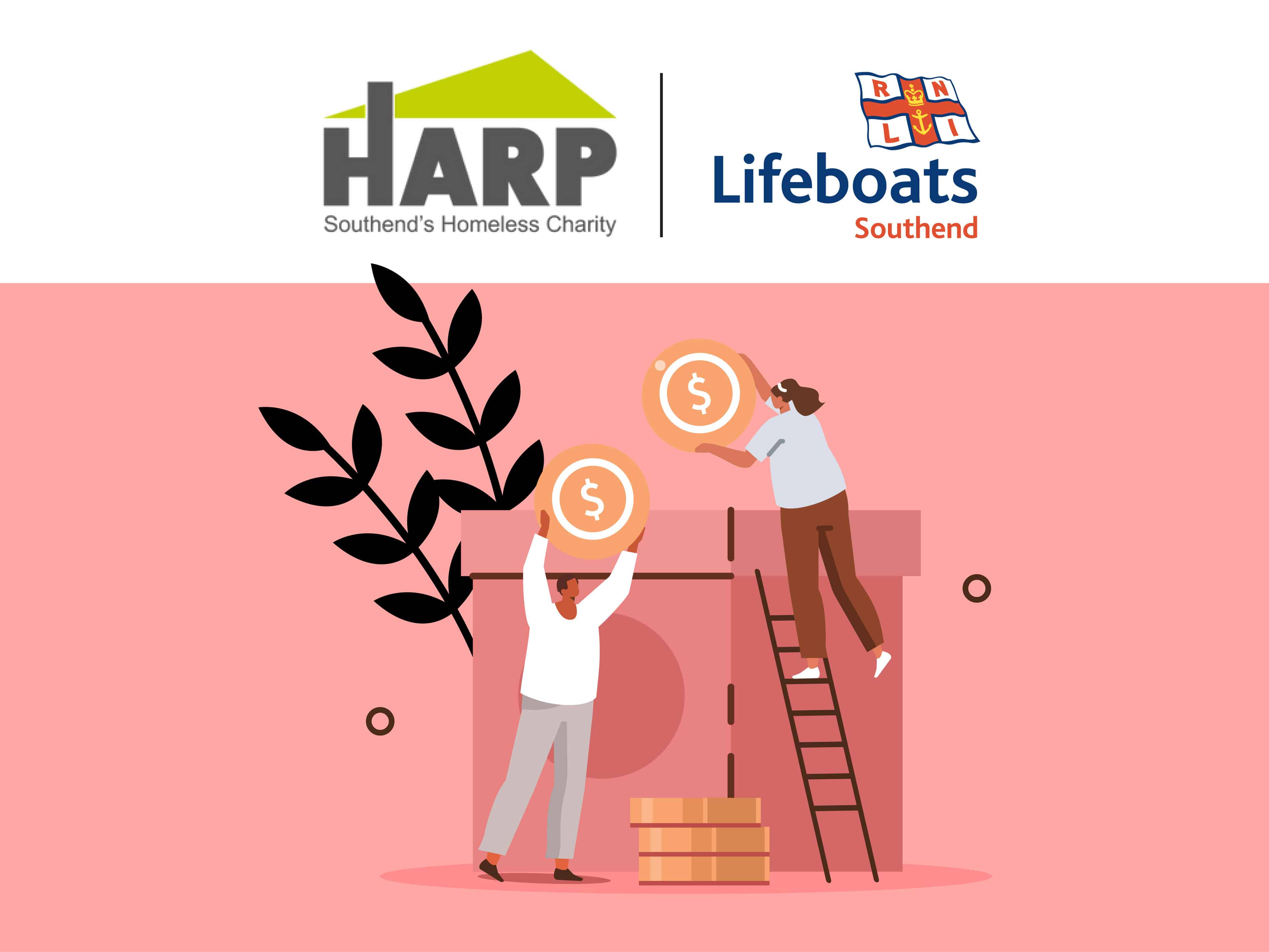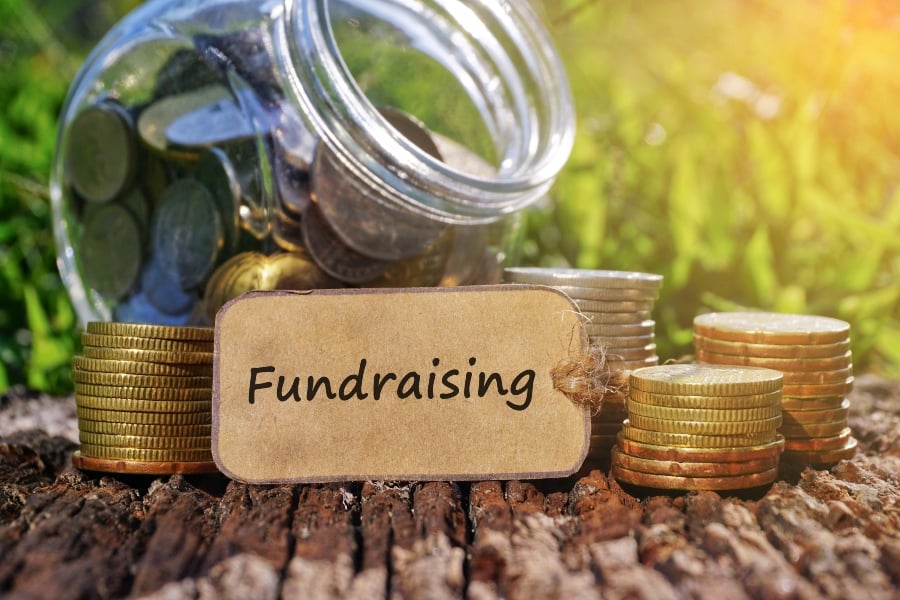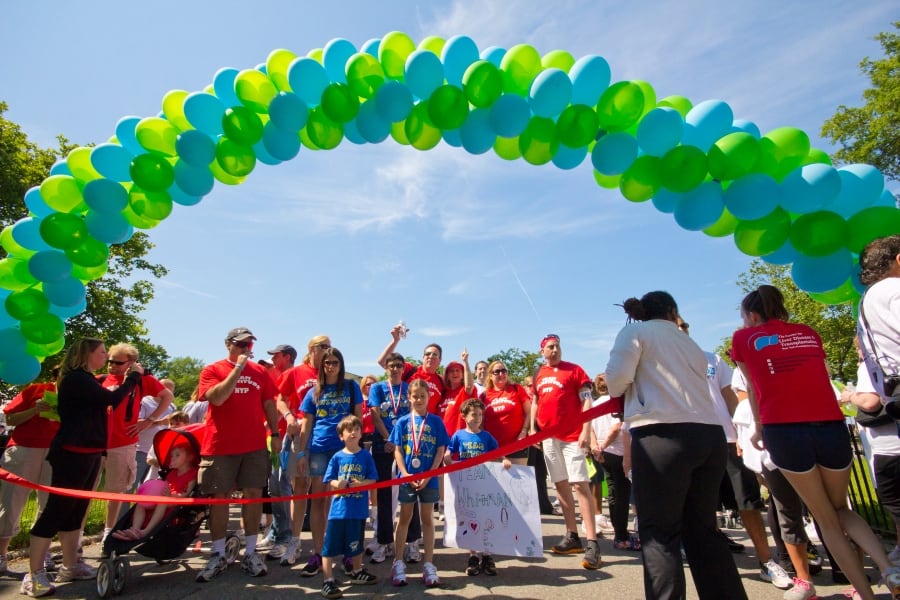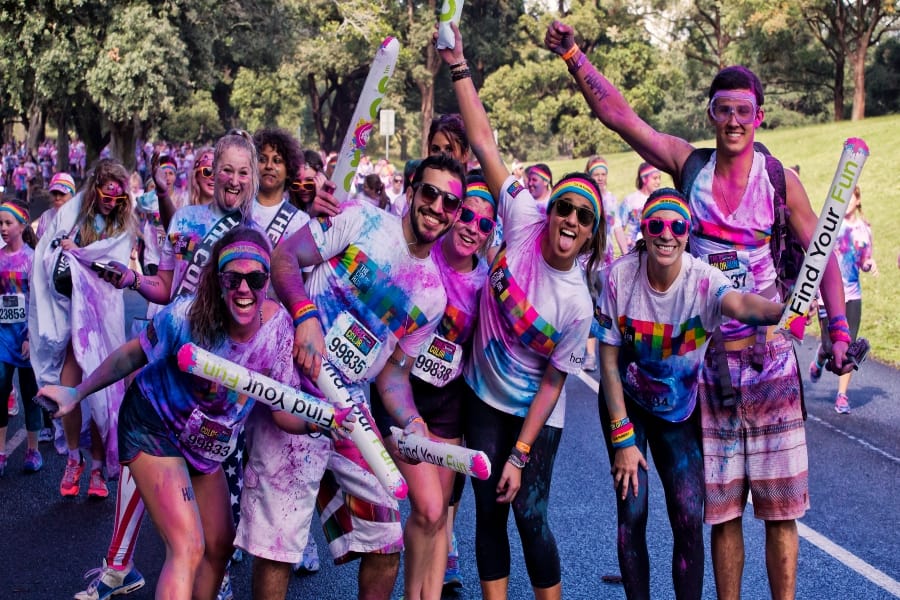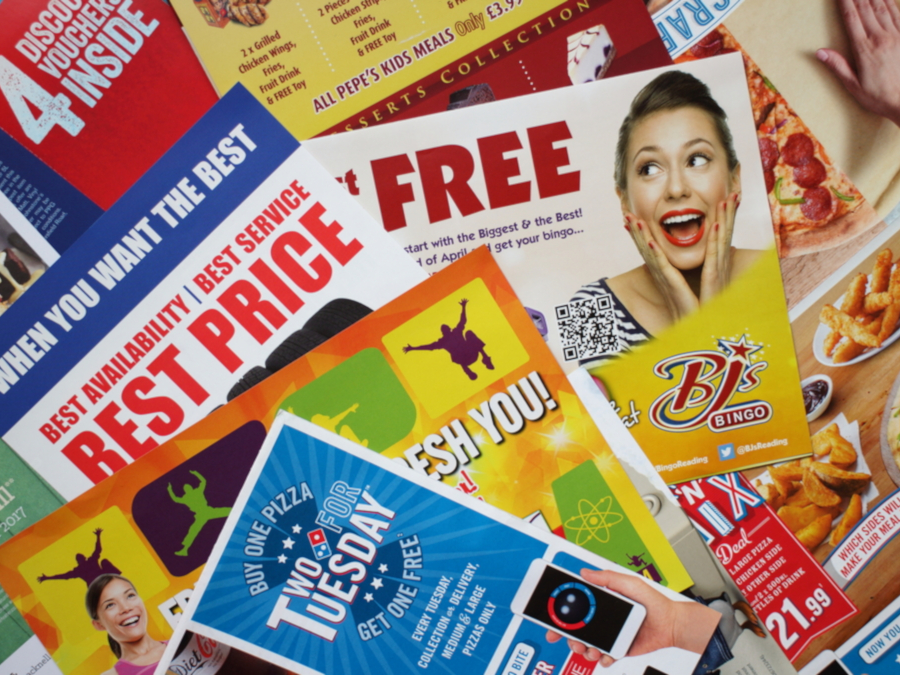Fundraising as a smaller charity can be challenging. Engaging with your local community is essential when gaining a foothold in your sector and area.
We spoke with two Southend-based charities who shared their wisdom on the importance of involving your local community to bolster your fundraising campaigns.
Stephen Mansfield, director of fundraising and communications of HARP, and Daniel Wanna, event manager for Southend RNLI have provided their invaluable knowledge on the following topics:
- Starting out in fundraising
- Goal setting
- Building a database of subscribers
- Raising funds
- Events-based fundraising
- Promoting events
- The value of print marketing
- Collecting donations
- Restricted and unrestricted funds
- Maintaining donor relationships
Starting out in fundraising
Begin fundraising with a clear vision and tailored plan for your local community. Identify the unique needs and challenges and show how your charity can effectively address them. Create a compelling narrative that highlights the immediate impact of local donations, benefiting individuals and families. Use grassroots strategies like word-of-mouth, community events, and local media to raise awareness and connect with potential donors. Emphasise the power of local giving to inspire support and create lasting change.
Stephen’s experience:
Look at your organisation and find out what’s successful or not based on your income. It’s important to make the most of your networks and work with people or businesses in your local area. Personally, we work with local businesses and churches. These relationships are ones that we work hard to nurture, maintain and build.
Pick aspects of fundraising that can maximise the effort you put in. Developing gift-giving is something I highly recommend. Get your systems set up to make gift-giving and direct debit as effortless as possible. Look at it this way: if you get 10 people to donate £10 a month, in a year you’ll have £1200.
Although we’re a local charity, it’s important not to pigeon-hole yourself to one area. Focus on your cause as well as your area, it’s important to get the balance right with this. We really try to push the local angle, as a Southend-based charity. Being local is a good differentiation to have as a charity to set you apart. Use your local angle as a strength, people really trust local charities.
Daniel’s experience:
We have our own monthly fundraising committee with someone who looks after each branch. We find that having consistent planning meetings is really helpful when starting out fundraising. Stuff has worked for years.
I’d recommend being proactive, as we’re reaping the rewards of this approach. Our unit in Southend has become the gold standard for all RNLI posts around the country. As a result of our success, we give talks about best practices nationally.
Goal setting
Set realistic goals that reflect your local community’s challenges and opportunities. Consider your organisation’s resources and capacity, setting attainable yet impactful targets. Celebrate both the small and large milestones as you work towards your larger vision. Communicate transparently with donors and supporters, showing how their contributions are driving positive change. By setting achievable goals, you can build momentum and inspire a sense of accomplishment among stakeholders.
Stephen’s experience:
When you’re thinking about goal setting, think about what fundraising channels you want to look at. Set realistic but ambitious targets. I’d suggest looking at previous fundraisers and working out where you want to go next. Do you want to achieve 10% more revenue from your previous fundraiser?
Thread your goals into your communication. If you want significant donors, create special events where people can get physically involved and feel invested in. As a local charity, it’s important to set realistic goals. In your first year, get one big donor who donates £10,000. In your second year try and get three people who can donate this amount.
Daniel’s experience:
As we’re all volunteers, it can be hard to set targets. As a unit, we know we need around £150,000 per year to function. For us at the RNLI, it’s not just about money. I’d suggest focusing on what it is you want to raise awareness about. It’s equally about raising awareness in an educational sense by providing talks and going into schools to talk about water safety.
Building a database of subscribers
Cultivate a dedicated community of supporters with a healthy number of local subscribers. Use various channels like community events, social media and word-of-mouth to gather contact information. Create a user-friendly online form to capture new subscribers. Regularly communicate through targeted emails or newsletters, sharing impactful stories and upcoming events. Nurture this loyal network to maximise support for your charity.
Stephen’s experience:
In the world we live in it’s all about GDPR. Capturing people’s information is absolutely crucial. Make sure it’s easy to access the data you have so you can always have it at hand. I think it’s key to make sure your opt-in forms are available everywhere: at your events, on your website and when someone donates. Remember to capitalise on your donations.
Daniel’s experience:
Locally we don’t have a list because of GDPR. The database of subscribers we have access to is the national RNLI list. We ask people if they’d be happy to be added to our list for events, only then do we add people to our mailing list that is purely for events.
Raising funds
Generate funds that directly benefit your community through creative and localised fundraising methods. Engage with local businesses, community groups, and individuals to secure donations. Organise community events like bake sales or charity runs to raise awareness. Utilise online crowdfunding platforms and grassroots campaigns to tap into social networks. Focus on targeted fundraising efforts to generate meaningful resources and drive impactful change locally.
Stephen’s experience:
Definitely look at building individual gift-giving. If you know it’s not going to bring in loads of income, think about secondary goals, such as building and improving your subscriber relationship management is key and building them.
Where possible, work together with similar charities. I have found collaborating with other charities is absolutely key. Personally, I think it would be negligent of us not to complement other charities similar to us in the local area. Volunteers help each other to fill in the gaps for fundraisers when possible.
Daniel’s experience:
Nationwide, the RNLI make £180 million per annum. Traditionally, around 60% of our total donations have come through wills, however, this is decreasing. As a unit, Southend RNLI needs to raise £150,000 each year to function and cover the costs of fuel, kit, training etc. Roughly, we raise £100,000, with the rest coming from the national pot.
Events-based fundraising
Raise funds and create unity through community events. Organise smaller-scale events that reflect your community with something they can engage with. Collaborate with local businesses and organisations to co-host events and amplify impact. Engage volunteers and supporters to participate and spread the word. Rally support, generate funds, and strengthen bonds within your local charity’s community.
Stephen’s experience:
Events-wise, if you’ve held one before, go back to your previous audiences to sell again. One thing that’s important is to look for lookalikes, new people who resemble your similar donors in their values. Do this through digital marketing or manually. Look for people with an affinity to your cause, they’re more likely to feel passionate about your work and engage with it. Create positive messages or press stories to reach new people and go beyond the followers you already have.
Daniel’s experience:
Large-scale events have become our speciality. This is what sets us apart, with events such as our Mulberry fun run which attracts over 1,000 people each year. Last year, this fun run made us a £16,000 profit. Another of our large events is the annual Boxing Day dip that gathers roughly 400 brave people and raises close to £10,000 each year.
Promoting events
Promote your events and engage community members through localised marketing tactics. Use community newsletters, local publications, and neighbourhood bulletin boards. Social media platforms are great to share event details and personal stories. Partner with local businesses to display promotional materials and provide incentives. Generate excitement and drive participation within your community through a hyper-localised promotional approach.
Stephen’s experience:
Target businesses, especially those who share similar values to your charity. Especially businesses those corporate social managers or people who have that in their roles. Focus on your USPs to show what separates you from other charities. Find your niche and find a way of marketing it.
Daniel’s experience:
We regularly send out mail shots to our mailing list. Historically, we didn’t get too much engagement from our Posters. Because of this, we replaced some of our print budget with social ads and our sign-ups went through the roof via Facebook and Instagram. It’s all about finding what works best for you.
The value of print marketing
Engage your local community through print marketing to foster personal connections. Use Flyers, Posters, and community notice boards to communicate your mission. Eye-catching designs and concise messaging can really capture people’s attention. Collaborate with local businesses to display print materials in their stores. Consider featuring in local magazines or small-scale print publications. Create a tangible presence that resonates with individuals within your community.
Stephen’s experience:
Print is massive! We need it for so many things. Events, initiatives and Posters for our charity shops. They’re a frontline for creating promotional things to show what we offer. It complements our work and brings so much value to what we do.
It’s about getting your message out there. Flyers and Posters and great for events while Leaflets and Brochures and brilliant for passing on more long-form pieces of information. We also send out Booklets for our legacy programme.
Daniel’s experience:
It’s easy for people to read an email and forget about it. Printed material offers a visual reminder and becomes harder to forget about. Place your print in relevant places where your target market may be. For us, that’s locations such as Yacht clubs and scout huts.
PVC Banners are essential for us. Each event we put on needs a new design to promote the event in the local town and area. We try to position them in high throughput areas and strategically locate them.
We give out welcome packs containing Double Folded Leaflets with a guide on creating a sponsorship page on JustGiving. They also include sponsorship forms and event information. Our packs include event Wristbands which are more of a visual cue or reminder.
Collecting donations
Make donation collection effortless through user-friendly and localised methods. Use online donation platforms tailored to your community’s needs. Offer traditional offline options for in-person interactions. Establish partnerships with local businesses or community centres for physical donation drop-off points. Communicate the impact of each donation and express gratitude to donors.
Stephen’s experience:
100% you need to get an online donation platform. Everyone wants to do things online or by card now. If we ever do bucket collections we always bring a card reader so people can give contactless donations. I’d recommend having an online payment provider. There’s an initial business cost but it’s a smart business decision as it makes donating for supporters easy. Include a QR code on your print as it provides an easy way to donate.
Daniel’s experience:
Buckets and boxes are huge for us. We have around 100 RNLI boxes located at shop checkouts locally. Having contactless card machines is essential for any fundraiser today, so people with or without cash can donate. We also have a JustGiving for our Southend station and ones we create for specific events.
Restricted and unrestricted funds
Your funds can be categorised in two forms: restricted and unrestricted.
- Restricted: donations are given with a specific purpose or project within the charity.
- Unrestricted: revenue that the charity can use for any purpose.
While restricted funds can boost specific initiatives, unrestricted funds provide financial stability and flexibility. They’re a significant part of a charity’s financial health.
Stephen’s experience:
Both types of funds are really important. Try to raise as much unrestricted funds as possible, in most projects we do we aim to raise this type of revenue. However, for big projects, restricted funds can be really helpful.
It can also be really attractive to restricted donors as they like to know where their money is being used. For example, we develop properties for homeless people to stay in which requires big donations. This is something we can physically show donors where their money has gone.
Daniel’s experience:
Any money raised in Southend stays in Southend. We’re very self-sufficient in this respect. There is an element of restricted funds. We get a lot of people who purchase a lifeboat for a specific station. What you find is that some stations receive more donations like this than others so these tend to go into the central pot as a result to even the share out.
Maintaining donor relationships
Nurture personal connections with donors to establish a dedicated support network. Acknowledge each contribution with personalised messaging. Showcase the impact of donations on the community. Keep donors updated on progress through stories and testimonials. Present people with opportunities for involvement. Maintain regular communication through email, newsletters and social media. Build a loyal donor base committed to making a difference in your community.
Stephen’s experience:
We have a thank you process where we send out a digital or printed Letter thanking them depending on how they donated. If they’ve opted into our marketing, we’ll send them an email or newsletter regularly. It’s important to ensure that they hear about the benefit of their support and upcoming events. This helps create consistent donors.
Daniel’s experience:
Keeping donors informed is essential to engaging people in new events. The RNLI name brings a certain weight with it. People respect us and feel encouraged to maintain their donations and relationship with us. We try and do all our events within our field too. Our Mulberry fun run is a race through the mud. The Boxing Day swim is in the water etc.
Area of influence
Daniel and Stephen have earned their insights through many years of hard work in the charity sector. Thanks to them taking the time to share their experience, you’re in a great position to take this knowledge and use it to tap into your local market of potential donors. When you’re ready, Solopress will help you with any of your printed needs to transform your local fundraising efforts.

